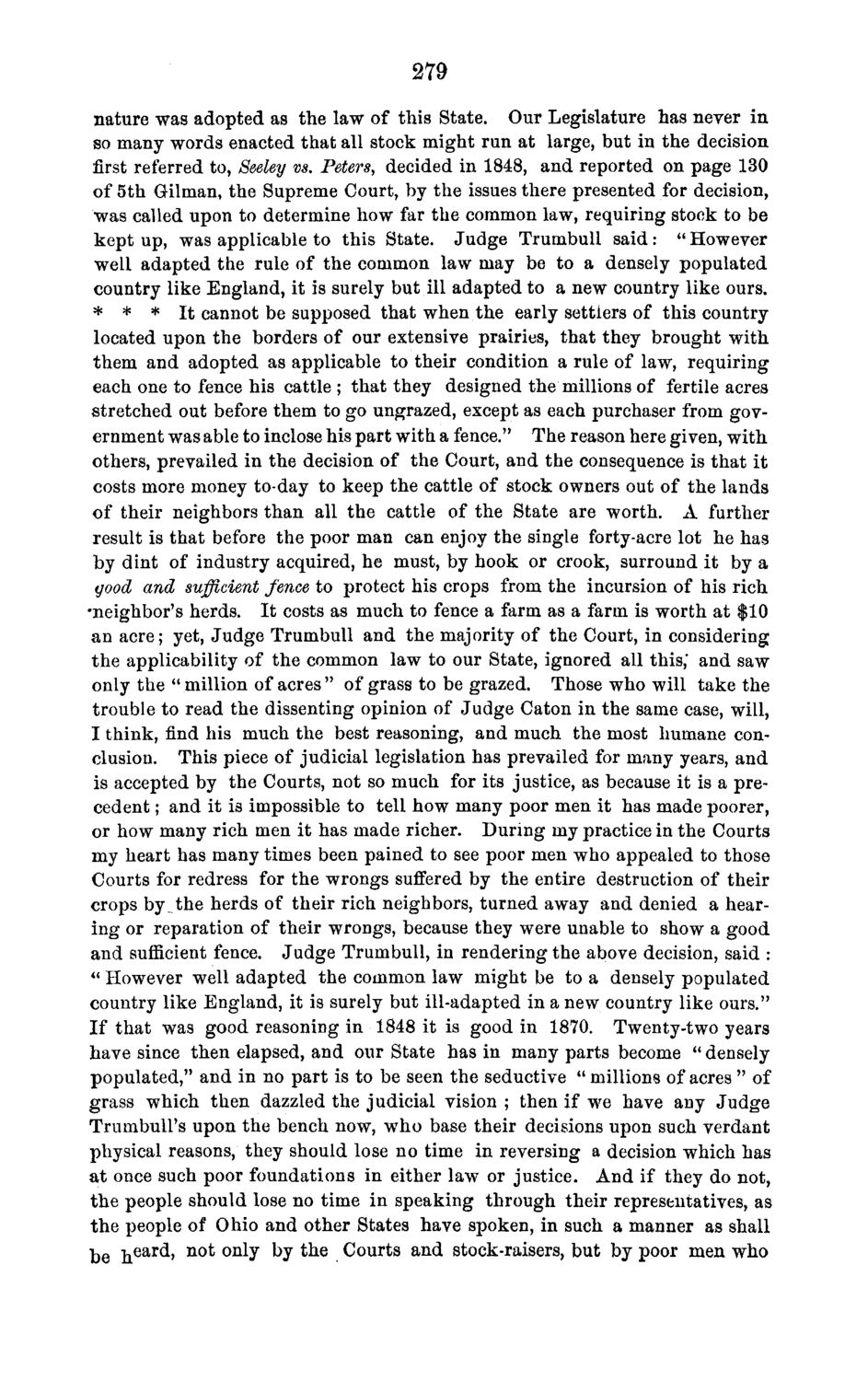| |
| |
Caption: Board of Trustees Minutes - 1870
This is a reduced-resolution page image for fast online browsing.

EXTRACTED TEXT FROM PAGE:
279 nature was adopted as the law of this State. Our Legislature has never in so many words enacted that all stock might run at large, but in the decision first referred to, Seeley vs. Peters, decided in 1848, and reported on page 130 of 5th Gilman, the Supreme Court, by the issues there presented for decision, was called upon to determine how far the common law, requiring stock to be kept up, was applicable to this State. Judge Trumbull said: " However well adapted the rule of the common law may be to a densely populated country like England, it is surely but ill adapted to a new country like ours. * * * It cannot be supposed that when the early settlers of this country located upon the borders of our extensive prairies, that they brought with them and adopted as applicable to their condition a rule of law, requiring each one to fence his cattle ; that they designed the millions of fertile acres stretched out before them to go ungrazed, except as each purchaser from government was able to inclose his part with a fence." The reason here given, with others, prevailed in the decision of the Court, and the consequence is that it costs more money to-day to keep the cattle of stock owners out of the lands of their neighbors than all the cattle of the State are worth. A further result is that before the poor man can enjoy the single forty-acre lot he has by dint of industry acquired, he must, by hook or crook, surround it by a good and sufficient fence to protect his crops from the incursion of his rich •neighbor's herds. It costs as much to fence a farm as a farm is worth at $10 an acre; yet, Judge Trumbull and the majority of the Court, in considering the applicability of the common law to our State, ignored all this,' and saw only the " million of acres " of grass to be grazed. Those who will take the trouble to read the dissenting opinion of Judge Caton in the same case, will, I think, find his much the best reasoning, and much the most humane conclusion. This piece of judicial legislation has prevailed for many years, and is accepted by the Courts, not so much for its justice, as because it is a precedent ; and it is impossible to tell how many poor men it has made poorer, or how many rich men it has made richer. During my practice in the Courts my heart has many times been pained to see poor men who appealed to those Courts for redress for the wrongs suffered by the entire destruction of their crops by the herds of their rich neighbors, turned away and denied a hearing or reparation of their wrongs, because they were unable to show a good and sufficient fence. Judge Trumbull, in rendering the above decision, said : " However well adapted the common law might be to a densely populated country like England, it is surely but ill-adapted in a new country like ours." If that was good reasoning in 1848 it is good in 1870. Twenty-two years have since then elapsed, and our State has in many parts become " densely populated," and in no part is to be seen the seductive " millions of acres " of grass which then dazzled the judicial vision ; then if we have any Judge Trumbull's upon the bench now, who base their decisions upon such verdant physical reasons, they should lose no time in reversing a decision which has at once such poor foundations in either law or justice. And if they do not, the people should lose no time in speaking through their representatives, as the people of Ohio and other States have spoken, in such a manner as shall k e ^eard, not only by the Courts and stock-raisers, but by poor men who
| |